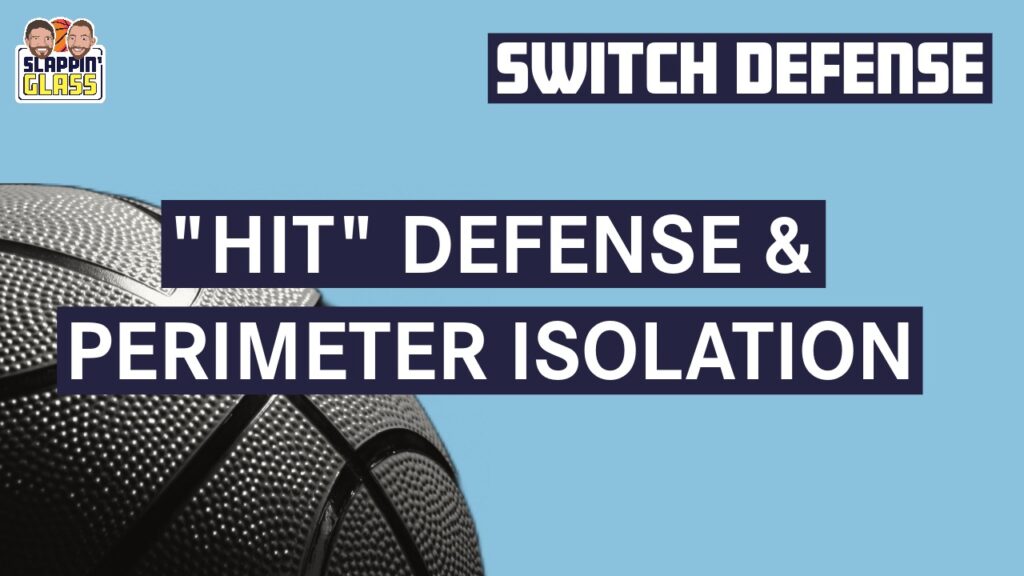Last year on the podcast, now Georgia Tech Assistant Coach, Nate Babcock, discussed with us the defensive strategy of “Hitting” (sending a double at the perimeter ballhandler), along with the analytics and overall philosophy behind it. To say the least, that conversation left us thinking, a lot, about the strategy and how/when teams might start to use it across the board to gain extra possessions and a strategic advantage.
In our discussion, Coach Babcock championed the merits of “Hitting” during end-of-quarter/halftime possessions as a strategy to take the offense out of their late-clock ISO/PNR concepts and bait them into taking a quick shot. The overall objective of “hitting” is to secure the last possessioninstead of passively allowing the opponent to take the final shot.
🤓 Analytical Nerdy Side Note: This strategy has analytical roots. By conceding the last shot, on a Points Per Possession (PPP) basis, the defense automatically concedes some probability of points. Therefore, it is to a defenses’ advantage to do what is in their power to gain an extra possession and win back the PPP disadvantage.
So, by “hitting”, the defense can force the offense into taking a quicker/disorganized shot (say with 8-10 seconds still remaining in the quarter/half) and then still have plenty of time to transition up the floor to take the last shot themselves.
Perhaps not a strategy for everyone or every situation; however, we have observed teams employing the “Hit” tactic more frequently in situations outside of end of quarter/half scenarios. This has mostly come in the concept of “hitting the switch”, where the defense aims to neutralize unfavorable perimeter matchups and stymie dominant isolation players.
The two most common occurrences, and highlighted in today’s video, are after a switch, when the perimeter player begins to isolate the big…
or in late game/clock scenarios when an opponent will isolate a dominant 1v1 player.
Why “Hit”?
Outside of finding ways to gain extra possessions and tilt the stats in your favor, “Hitting” can be effective for teams that frequently switch, as it helps in resolving mismatches and returning the defense to a neutral state.
Zooming In: Teams often switch to neutralize an opponent’s PNR offense and limit three-point attempts. However, a byproduct of this strategy is that the defense, in many cases, ends up presenting the offense with two mismatches. What we have noticed in our breakdown is that by “Hitting” the ballhandler after the switch, the defense can effectively resolve both these mismatches. A more capable defender stays after the trap on the ball, while the big drops back to the rim to bounce the guard out of the post mismatch.
This “controlled” or “pre-determined” rotation by the defense during the “Hit” also disrupts the offense’s switch strategy, forcing the offense to become reactive to the defense. This often results in rushed possessions with poor offensive spacing.
Zooming In: What we began to notice is that if the “Hit” is executed properly (more details to come), the defense is prepared to defend the pass out. If the ballhandler becomes impatient and attempts to beat the trap, they often over-dribble to navigate through it. This leads to the ballhandler dribbling out so wide that they sacrifice court balance. As shown above, this situation resulted in successive drives back into the heart of the defense, making it easier for defenders to execute peel switches, and leaving one defender capable of guarding two.
Another merit of the “Hit” tactic is its compatibility with the “Anyone but…” approach during late-game possessions. When facing opponents with a dominant 1v1 player, whose possessions are routinely orchestrated through them, the advantageous solution is to get the ball out of their hands and force someone else to make a play.
How to “Hit”?
Most of today’s breakdown focuses on the details of how to execute the double and the subsequent rotations. Two key elements stand out, both involving the angles:
1. The angle of the defender coming over to trap, and
2. The angle of the closeout from the second help defender. While the defense encourages the pass out, of vital importance is rotating with the proper angle to prevent any straight line passes to the corner and channel any potential drives back into the middle.
For much more on the angles and rotations behind this “hitting” strategy, along with tons of different film examples, please enjoy this week’s Deep Dive breakdown on SGTV! Not a member? Join Here.
